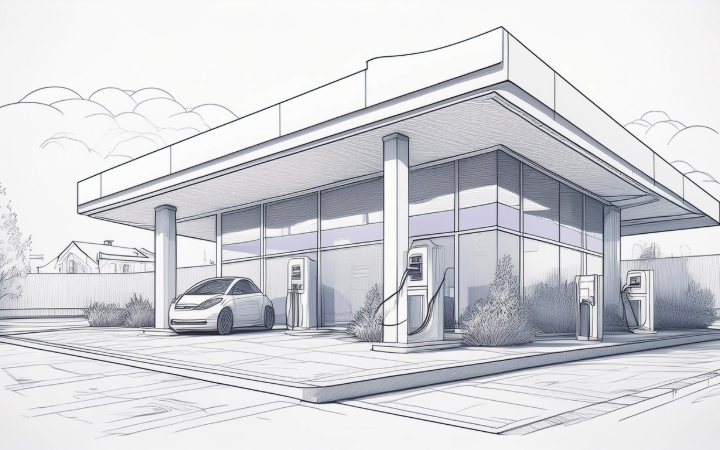How to Start an EV Charging Station Business: A Step-by-Step Guide
With the growing popularity of electric vehicles (EVs), the demand for charging infrastructure is on the rise. Starting an EV charging station business can be a lucrative venture, but it requires careful planning and execution. Here’s a step-by-step guide to help you navigate the process.

With the growing popularity of electric vehicles (EVs), the demand for charging infrastructure is on the rise. Starting an EV charging station business can be a lucrative venture, but it requires careful planning and execution. Here’s a step-by-step guide to help you navigate the process.
1. Market Research and Feasibility Study
Before diving into the business, conduct thorough market research to understand the demand for EV charging stations in your target area. Consider the following:
- EV Adoption Rates: Analyze the current and projected growth of electric vehicles in the region.
- Competition: Identify existing charging stations and assess their strengths and weaknesses.
- Target Audience: Determine whether your primary users will be residential, commercial, or fleet vehicles.
- Location Feasibility: Evaluate potential locations based on factors like traffic density, proximity to popular destinations, and availability of space.
Conducting a feasibility study will help you assess the profitability of the venture and identify any potential challenges.
2. Business Plan Development
A comprehensive business plan is essential for securing funding and guiding your business. Your plan should include:
- Executive Summary: Outline your business idea, objectives, and mission.
- Market Analysis: Present findings from your market research.
- Business Model: Define your revenue streams (e.g., pay-per-use, subscription models, partnerships with businesses).
- Location Strategy: Justify your chosen locations and expansion plans.
- Financial Projections: Provide detailed forecasts of startup costs, operating expenses, and expected revenue.
- Marketing and Sales Strategy: Describe how you plan to attract customers and promote your services.
3. Legal Considerations and Permits
Starting an EV charging station involves several legal requirements. Here’s what you need to do:
- Business Registration: Register your business as an LLC, corporation, or sole proprietorship depending on your needs.
- Zoning Permits: Ensure your chosen location complies with local zoning laws.
- Building Permits: If constructing new stations, secure the necessary building permits.
- Environmental Regulations: Comply with local, state, and federal environmental laws related to EV infrastructure.
- Utility Approvals: Coordinate with utility companies to ensure the availability of adequate power supply.
Consult with a legal expert to ensure all regulations are met and to obtain the required licenses.
4. Securing Financing
Financing is crucial for the success of your EV charging station business. Explore the following options:
- Personal Savings: Use your savings to fund the initial stages of the business.
- Bank Loans: Apply for a business loan from banks or financial institutions.
- Investors: Seek funding from venture capitalists or angel investors interested in the EV sector.
- Grants and Incentives: Look for government grants, tax credits, or incentives available for renewable energy projects.
Create a solid financial plan to convince lenders or investors of your business’s profitability.
5. Choosing the Right Charging Equipment
Selecting the appropriate charging equipment is critical for your station's success. Consider the following types:
- Level 1 Chargers: Basic chargers using a standard 120V outlet, suitable for residential use.
- Level 2 Chargers: Faster chargers using a 240V outlet, ideal for public and commercial locations.
- DC Fast Chargers: High-speed chargers for quick top-ups, typically found along highways and in busy areas.
Work with reputable suppliers to source reliable and durable equipment that meets your customers’ needs.
6. Installation of Charging Infrastructure
Once you’ve secured your location and chosen your equipment, it’s time to install the infrastructure:
- Site Preparation: Ensure the site is ready for installation, including any necessary construction work.
- Electrical Work: Hire licensed electricians to install the necessary wiring and power connections.
- Equipment Installation: Install the charging units according to manufacturer specifications.
- Testing and Calibration: Test the chargers to ensure they are functioning correctly and are calibrated for accurate billing.
Partnering with experienced contractors can help ensure a smooth installation process.
7. Developing a Pricing Strategy
Your pricing strategy should balance profitability with affordability. Consider the following models:
- Pay-Per-Use: Charge customers based on the amount of energy consumed or the time spent charging.
- Subscription Model: Offer a subscription for unlimited or discounted charging sessions.
- Membership Discounts: Provide discounts for frequent users or members of specific organizations.
Analyze competitor pricing and adjust your rates to attract customers while maintaining a healthy profit margin.
8. Implementing a Management System
Efficient management is key to running a successful EV charging station. Consider these tools:
- Charging Station Management Software: Use software to monitor station usage, energy consumption, and customer billing.
- Mobile App Integration: Offer a mobile app for customers to locate stations, check availability, and make payments.
- Customer Support: Provide 24/7 support to assist customers with any issues they may encounter.
Invest in a robust management system to streamline operations and enhance the customer experience.
9. Marketing and Promoting Your Station
To attract customers, you’ll need to market your charging station effectively. Consider these strategies:
- Local Advertising: Advertise in local newspapers, radio, and online platforms to reach your target audience.
- Partnerships: Partner with businesses, shopping malls, and restaurants to offer charging services on their premises.
- Online Presence: Create a website and social media profiles to promote your services and share updates.
- Incentives: Offer discounts, loyalty programs, or free charging sessions to attract new customers.
Tailor your marketing efforts to your target audience and adjust strategies based on customer feedback.
10. Monitoring and Scaling the Business
Once your EV charging station is operational, it’s important to continuously monitor performance:
- Usage Analytics: Track station usage patterns to optimize operation times and manage peak demand.
- Customer Feedback: Gather feedback to identify areas for improvement and enhance the user experience.
- Revenue Tracking: Regularly review financial performance to ensure profitability.
As your business grows, consider scaling by adding more charging stations, expanding to new locations, or offering additional services such as vehicle maintenance or car wash facilities.
Conclusion
Starting an EV charging station business requires careful planning, a solid understanding of the market, and a commitment to quality service. By following these steps, you can establish a successful and sustainable business that contributes to the growing EV ecosystem. As the demand for electric vehicles continues to rise, your charging station could play a crucial role in supporting the transition to a greener future.





